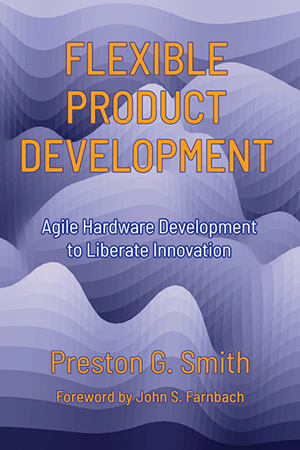Flexible Product Development:
Agile Hardware Development to Liberate Innovation
(New Revised Edition)
 CHANGE
presents a dilemma to product developers. It is the essence of
innovation, for which developers strive. As they work every day,
product developers discover improvements (innovation), but to
incorporate these improvements, plans have to change.
CHANGE
presents a dilemma to product developers. It is the essence of
innovation, for which developers strive. As they work every day,
product developers discover improvements (innovation), but to
incorporate these improvements, plans have to change.
Unfortunately, seasoned developers have learned that midproject change has a high price: schedule overruns, blown budgets, rework, and quality problems. To avoid such complications, it is safer to follow the original plan, leaving the change for the next project—or for a competitor!
Software developers have overcome this dilemma by discovering and applying so-called agile software development: small and dedicated teams, very short development cycles, early testing, and heavy customer involvement. These techniques are a blessing for software development, but they can't be applied to non-software products directly, because they depend on the malleability of software.
This book dissects agile development, discovers its roots, and rebuilds a set of techniques that allow non-software developers to accommodate change during a project, thus resolving the dilemma of change for hardware products, too!
Tools to Compete in Chaotic Times
Explore it:
|
Details:
|
|
Purchasing Flexible Product Development
1-9 copiesUS$ 11.00 plus shipping from Amazon.com or your local book dealer
|
|
|
|
Home Flexible Product Development (book)
Proactive
Risk Management Developing Products in Half the Time (book)
Product Development Publications
+1 (503) 274-0673 Last updated: 29 May 2021. Please report any problems you encounter or questions that arise |